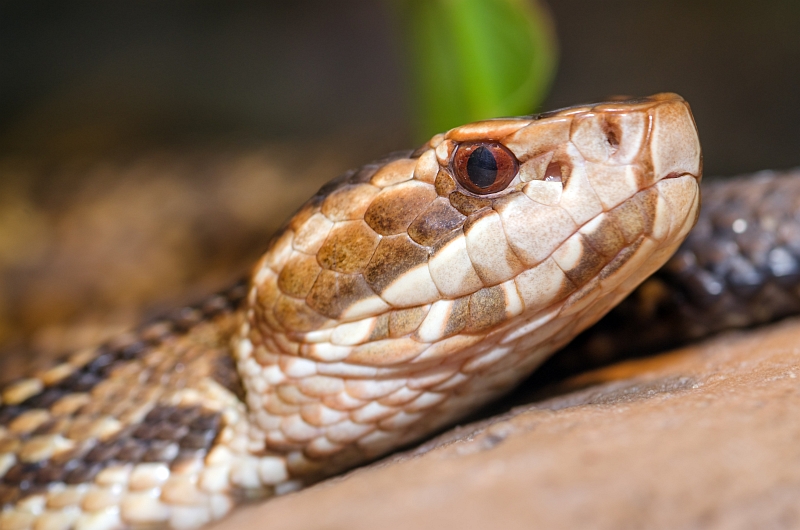In the United States, there is an estimated 8,000 cases of humans being bitten by venomous snakes every year. While there is little hard evidence detailing the number of canine snake bites annually, we are only left to imagine how frequently they occur, if the number of attacks on people is so high. One animal medical clinic estimated that of the emergency snakebite cases for dogs and cats has soared up to 150,000 nationwide. Fortunately, there are helpful tips about what to do if your dog is bitten by a snake but here are some other important notes on what kinds of snakes are venomous, and how the severity of the attack can be gauged based on visible symptoms. Before you and your trusty dog venture out into the great outdoors, make sure your knowledge on snake bites is up to snuff.
Common Venomous Snakes
Depending on the region of America in which you live, the most common snakes known to attack pets are copperheads, rattlesnakes (also called pit vipers), cotton mouths (also known as water moccasins), and coral snakes. The snake species crotalidae (including all of the above snakes with the exception of coral snakes, which are in the elapidae family) are all wide-jawed reptiles with elliptical pupils, and their heads shaped in a triangle. When they bite it is typically around the pet’s legs, head and mouth area.
Symptoms: Crotalidae Snakes
Fortunately, though the bites of crotalidae are certainly painful, they are far less likely to be fatal than elapidae snakes. These snakes general bask in plain sight to soak up the sun rays by lounging on hot rocks, piles of dry sticks, or along water sources and in grassy areas. People also have happened upon them in cool dark areas like shallow caves and in the shadows of rocks.
Bite symptoms
- Swelling in the injured area
- Evidence of pain (indicated through limping, whimpering, and yelping)
- Bleeding or puncture marks from the snake fangs
- Labored breathing/shortness of breath
- Drooling
- Weakness
- Collapse
- Pale gums (indicating toxins in the bloodstream)
Symptoms: Elapidae Snakes
Coral snakes are different from reptiles in the crotalidae family of snakes, in that they are brightly colored in red, black and yellow and have much shorter teeth than their fanged counterparts. Because of this, instead of striking their prey, the coral snake gnaws or chews their victim as a means of disbursing venom. The venom of elapidae snakes is incredibly potent, paralyzing the respiratory system and generally proving fatal.
Bite Symptoms
- Vomiting
- Diarrhea
- Drooling
- Labored breathing
- Lack of muscle function
- Disorientation
- Lethargy

